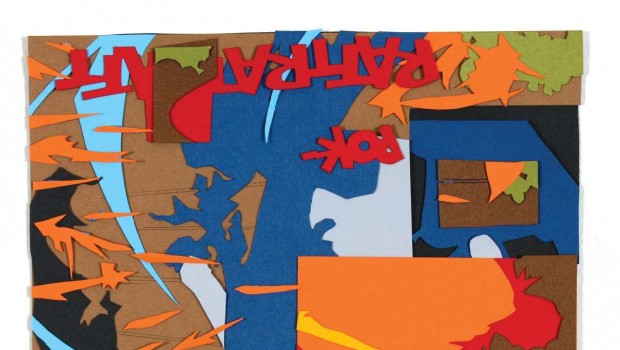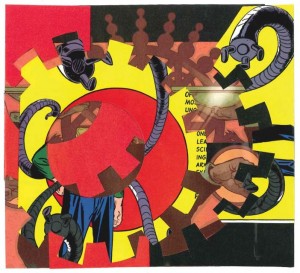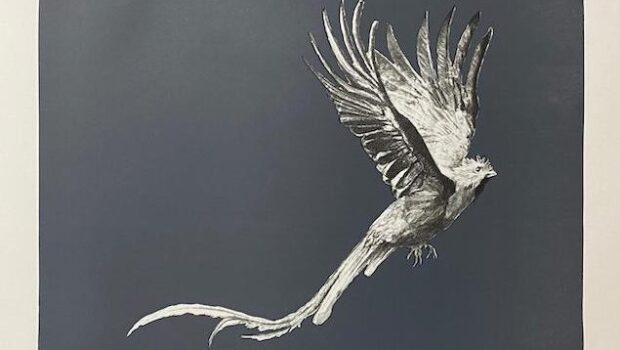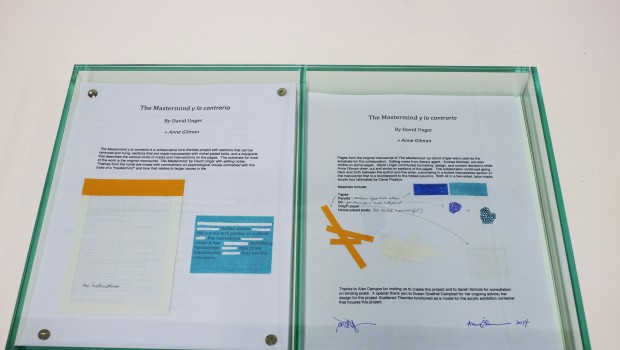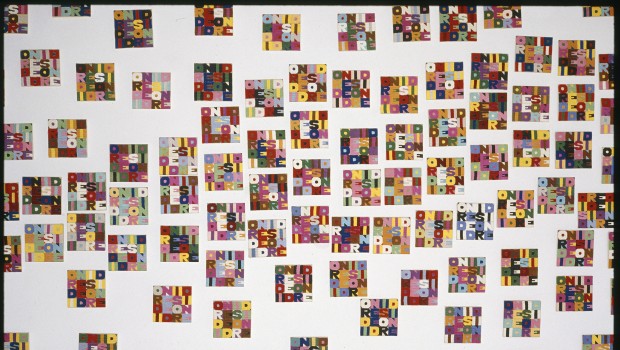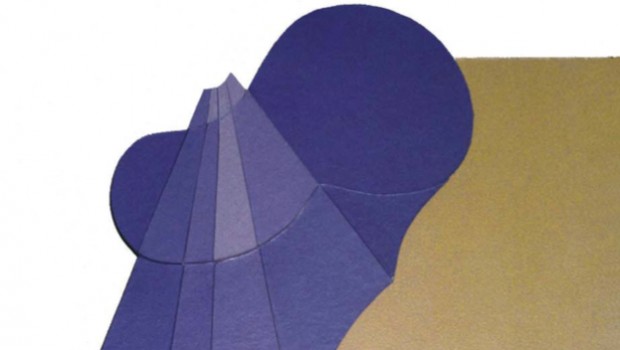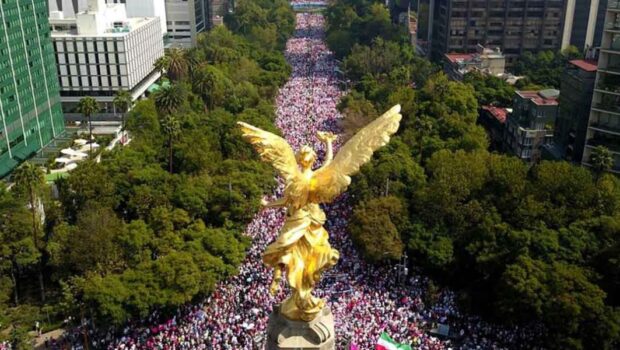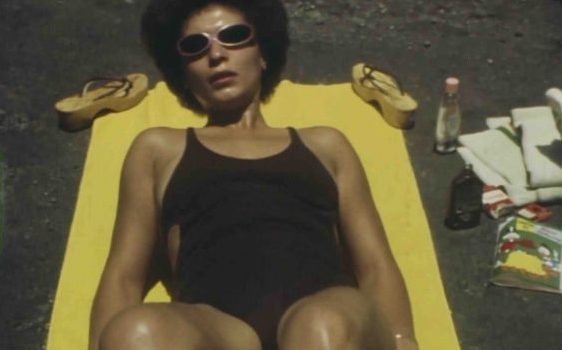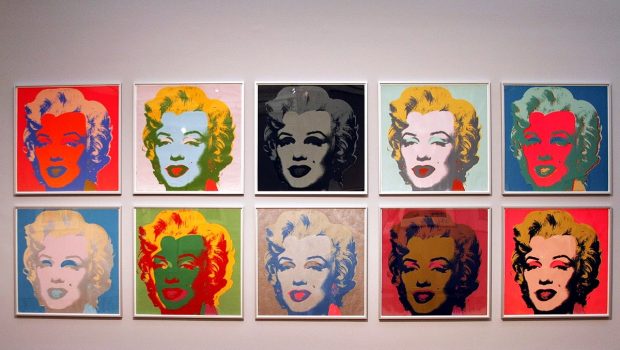The Flow of Narrative Through Sequential Images: Curtis Gannon
Rose Mary Salum
In Comics, Time Is Always Now
Download Complete PDF / Descargar
Rose Mary Salum: You’ve collected comics since you were a kid. It seems that you’ve found a way of expression through them. What is it about comics that move you, that make you unfold a whole visual language through them?
Cutis Gannon: I enjoyed comics as a kid because they were a means of escaping life’s monotony and frustrations. I was drawn to the fantastic storylines, the larger-than-life characters and settings, and the dramatic artwork. Comic books have the ability to transport their audiences to anyplace and anytime, where the impossible is possible. In retrospect, I realize that comics helped me to translate and define the pressures of growing up in our contemporary, urban society. As an artist, I am fascinated with understanding how comic books function as a communication media. My work explores their serial/fragmented nature, ideas of anticipation and identity, how they create a sense of time and place, the flow of narrative through sequential images, the mythical basis of superheroes, and how they entice the reader into participating in the narrative.
RMS: Your work entices the observer into participating not only in the narrative of your visual language but also in the serial/ fragmented mini explosions of color and texture creating a world with volume and excitement. What do you want the spectator to see/feel?
CG: My work explores the drama, beauty, and sense of anticipation inherent in comic books. I want the viewer to be moved by the use of intense color, suggestive shapes, and dramatic line. Aware that abstraction can appear intimidating and perplexing, I reference comics because of their general approachability. The visual language of comics has the ability to surpass age, language, cultural, and social boundaries. Intimate scale, textured paint, and the stacking of elements stimulate our sense of touch, bringing attention to each piece’s physical qualities. The small scale of most of my work comments on the intimate size of comic books. They are a very personal media, meant to be read by a single individual, unlike the mass entertainment of television, radio, and cinema. My compositions extend to the limitations of their support, activating the edges. This strategy suggests that the composition continues beyond the borders of what is seen, creating a sense that what is presented is a smaller portion of a larger whole. It creates an illusion that makes these works appear larger than they really are. At their core, comics are fragments. Each panel is a fragment of the page, each page is a fragment of that particular issue, and each issue is a fragment of an ongoing series. This fragmentation enhances another of comic book’s fundamental qualities, a sense of continuous anticipation. Anticipation is the fuel that propels the action towards an unforeseen conclusion. The cover alludes to the issue’s climax, and each comic book usually ends with some unanswered question or “cliffhanger” situation. The desire for resolution perpetually leads the reader to acquire the next issue or related issues. I want the work to suggest this continuum. In terms of narrative content, the viewer brings their own experiences to each piece, and bases their interpretation on those experiences. Like most abstract painting, my work does not have a set meaning, but is meant to establish a dialogue with the viewer. This dialogue is communicated through ideas, feelings, and aesthetics.
RMS: You said that your composition continues beyond the borders of what is seen. That is exactly what I sense in Closure Grids. It shows many levels of reality framed in a comic gutter. It´s like a perfect metaphor of today’s reality (all these empty panels superimposed one over the next one framing all these movements and textures.). It is indeed an accomplished dialogue. Would you elaborate on this subject?
CG: When developing the Closure Grid pieces, I wanted to create a body of work that spoke specifi cally about comic book closure. “Closure” is the duration of action and time that occurs in between panels. In the comics business, the white lines that separate panels are often referred to as “the gutters”. It is within this small gap that the reader must interact with the narrative by filling in the details. Time and space are very elastic between panels. The distance between panels can represent a single breath, or it can transport the reader from the Stone Age in one panel, to a rocket ship in the next. In my paintings and collages, I have tried to expand on this idea, but have never achieved exactly what I had hoped. By using the medium of comics to talk about itself, I was able to specifi cally isolate the gutters. By removing all but the inner edge of each panel, these pieces limit the burdens of signifi ers, while still revealing brief glimpses of what might have been contained within each panel. The dense layering of these subjectless grids emphasizes the fragmented and serial nature of comic books, without talking about specifi c titles or characters. I am fascinated by the idea of dialoguing about the present and future by referencing the past. With this in mind, this body of work is used as a platform to highlight my favorite period in comics, the Golden and Silver Ages. These are the comics created between the late Thirties and the early Seventies. They have an innocence that has been lost since comic books became big business in the Seventies and Eighties. During this period of comic book history, there is a simplicity and honesty to the storytelling and artwork. These early writers and artists were trying to make rent and feed their families one issue at a time. They had no idea that their creations would still be thriving today. These pre-digital works were beautifully printed on newsprint with only a handful of colors and techniques, while in the modern industry, virtually anything is possible. Though based in comics of the past, the Closure Grids are commentaries about our contemporary technological society. Most computer technology, from your laptop to cable television, is based in a layered, compartmentalized format. Everywhere we look, we are bombarded by reproduced images. The voids in the Closure pieces represent the rectangular platform for advertising. This platform is represented by billboards, magazines, candy wrappers, coffee cups and just about everything on an iPhone. This proliferation of reproduced images is a hallmark of our contemporary society.
RMS: The idea of time is referenced in this last answer as well as your, studio practices and in comics themselves. Could you elaborate in this subject?
CG: The idea of time is one of my biggest preoccupations, and is an important element in my work. Man is busier than he has ever been. We are obsessed with our schedules; always searching for new methods and technologies to help us use our time more efficiently. Much of this can be attributed to rapid growth of technology, and the numerous advancements in travel over the last hundred years. Time is always short and seemingly against us.
I reference time several ways in my work. My titles suggest ideas of time by referring to the seasons, history, clocks, and periods in our lifespan. The detailed nature of my work suggests the countless hours poured into even the simplest of pieces. The effort required to digest a complex composition makes the viewer aware of their own place in time. A substantial commitment of time invested in a work of art is something I have always admired in the work of others. Time is also represented in my work through layering. In a painting or collage, I think about time in terms of perspective and depth. The images/layers closest to the viewer’s perspective are the most recent.
Since comic books are composed entirely of still-frame moments, the majority of time transpires between panels. In comics, time is always now; the current panel being read is the present, the last panel is the past, and the next panel will always be the future. This physical understanding of time is something I try to embody within my work.
Posted: April 18, 2012 at 10:09 pm


